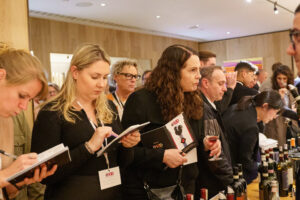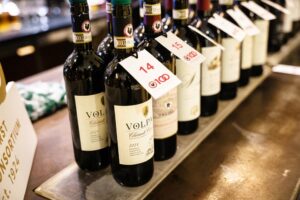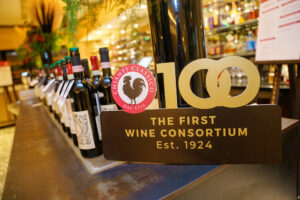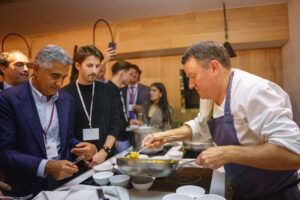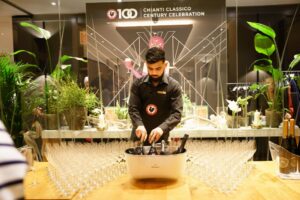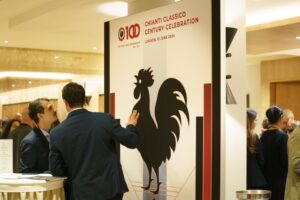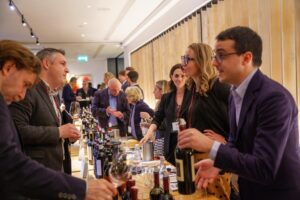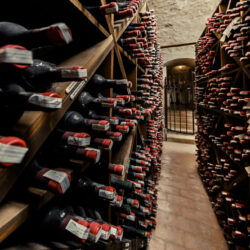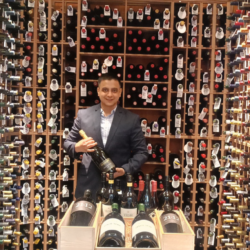The Chianti Classico Consorzio continued the celebration of its 100th anniversary with an event held in London in June. We caught up with Daniel Stojcic, head sommelier at Estelle Manor in Oxfordshire, and the Consorzio’s first UK ambassador, to hear about his affinity with this acclaimed region
“After winning the inaugural UK Sommelier Ambassador of Chianti Classico competition in 2022, and having had the chance to visit Tuscany several times since then, it has been a fascinating to see the region move from strength to strength.
I won the title against other Sommelier Edit UK Top 100 2024 sommeliers. It involved an extensive theory test, as well a fiendishly tough blind tasting exam of four Chianti Classico wines in just 20 minutes, followed by a quick-fire question/answer interview with the judges. My love of wines from the region was high already and it has grown ever since.
The Chianti Classico Consorzio was founded in 1924 and is the oldest wine region in the world, with the boundaries of the Chianti Classico zone were defined in 1716. For its centenary celebration, the Consorzio invited sommeliers, as well as journalists and on-trade professionals, to a memorable evening at Theo Randall’s restaurant on Park Lane with more than 30 producers showcasing the wines of the region.
The region has gone through modernisation and dynamic changes over the last two decades and it’s now slowly paying dividends in its reputation and high quality wines loved around the world.
Reclaiming pride in Sangiovese
It wasn’t so long ago that Chianti Classico, the historic home of Sangiovese, lost faith in its signature red grape. The regulations required it be blended with — diluted by, really — other grapes, including white varieties. This was, thankfully, abolished by law from the 2006 vintage and the focus is now shifting more to single varietal Sangiovese and away from international varieties such as Merlot or Syrah. The producers of the region often go back to other local varietals such as Canaiolo or Colorino when it comes to adding extra elements to the blend of Sangiovese to let the local terroir come through in the wines.
New regional subzones
Another major step forward in focusing on Sangiovese took place in 2021 when members of the Chianti Classico Consorzio voted for new, stricter rules for their highest level Gran Selezione wines by introducing 11 sub-zones (UGA – Unità Geografiche Aggiuntive) to reinforce the relationship between the wine and the specific piece of land from which it was produced. Quality is not only distinguished on the palate, but is defined by uniqueness, and the location of the vineyard is the element that mostly provides that singularity.
As consumers become increasingly interested in a wine’s vineyard origins, the new UGA classifications highlight the region’s unique terroirs. The eleven sub-zones are: Castellina, Castelnuovo Berardenga, Gaiole, Greve, Lamole, Montefioralle, Panzano, Radda, San Casciano, San Donato in Poggio and Vagliagli.
Chianti Classico’s producers have long debated whether it is better to offer straightforward labelling or highlight the historic region’s distinct terroirs. The UGA decision definitely moves toward the latter. In formalising the UGAs on the labels, some regions, such as Castellina, Gaiole and Radda, will keep the same boundaries as before, while others have
been modified. The former Castelnuovo Berardenga has been carved in two, its western half now called Vagliagli. Barberino Val d’Elsa and Tavernelle have been combined in San Donato in Poggio. Greve has seen the largest change and is now split into four UGAs: Greve, Lamole, Montefioralle and Panzano.
This change meant, that for Gran Selezione wines, Sangiovese must make up at least 90% of the blend (in comparison, 80% Sangiovese is required Annata and Riserva wines) and no international varietals are allowed in the blend.

Producers to discover
Producers that mainly focus on that new style were present in London and proved, yet again, what a great variety Sangiovese is and that the future is looking more promising for this region than ever within the UK market, not only in terms of restaurant wine lists, but also for collectors in private cellars. Some of the finest, well-known producers in this region that I think you should look out for are wineries such as Querciabella, Fontodi, Dievole or Fèlsina, while smaller, lesser-known, independent wineries such as Buondonno or Tregole are also playing an exciting and important role in developing the long-term future of the region.
Here’s to celebrating another one hundred years of the Consorzio. Salute!”



